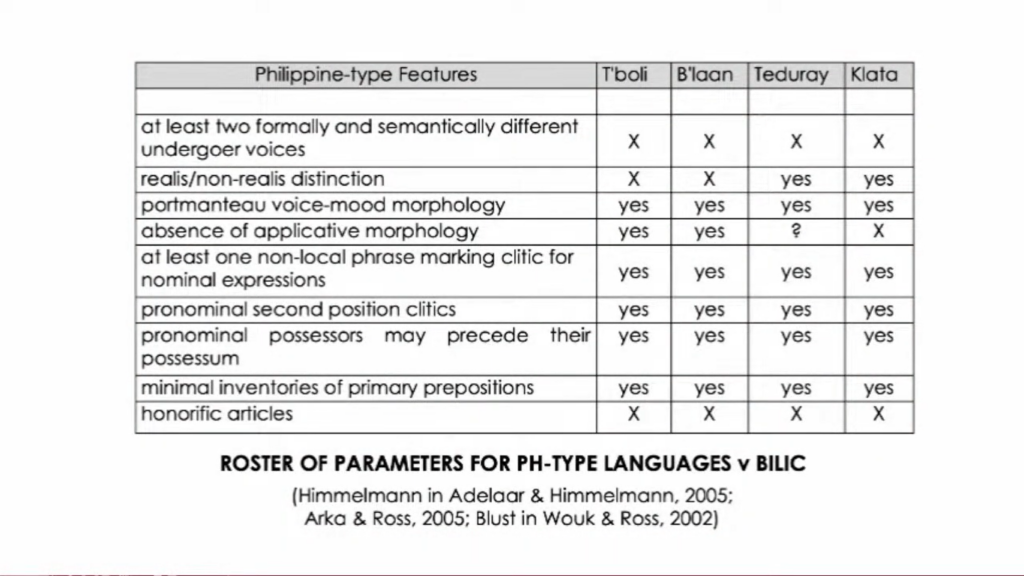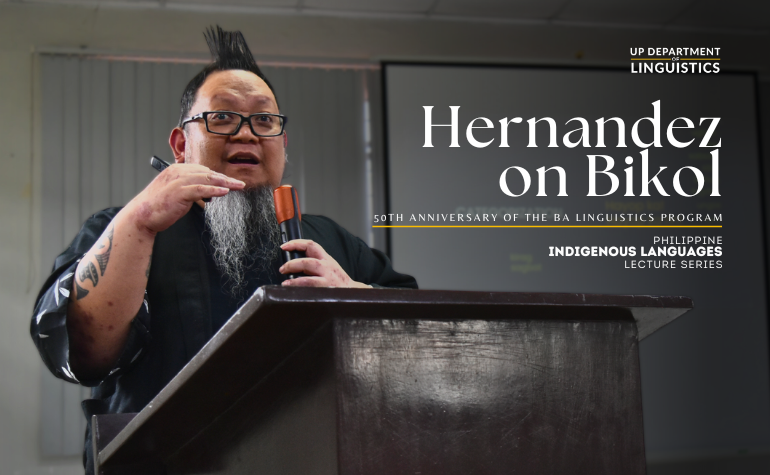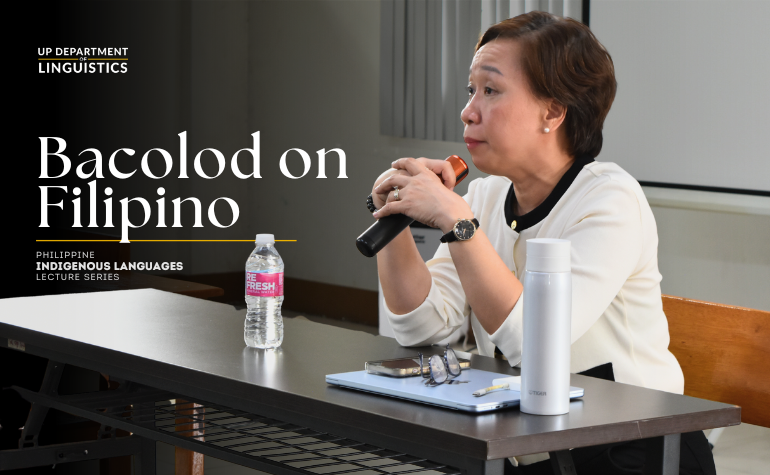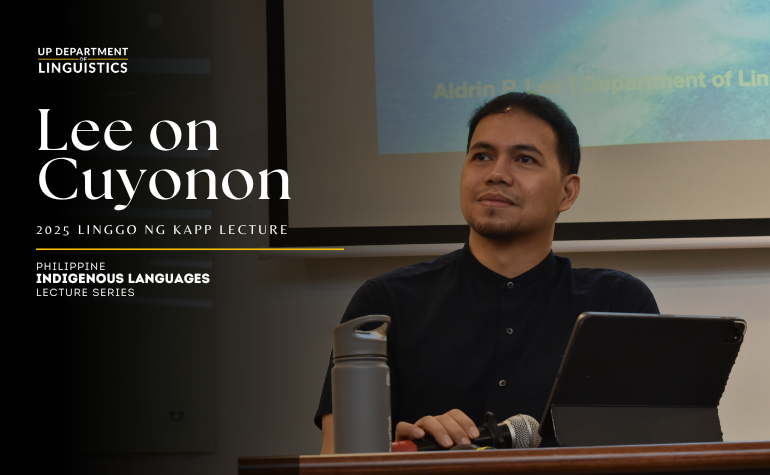
For the fourth installment of the 2023 Philippine Indigenous Languages Lecture Series (PILLS), PhD Candidate Honeylet Dumoran discussed her preliminary analysis of the internal and external relationships of Bilic languages. The data and findings she presented about Tboli, Blaan, Teduray, and Klata are part of her ongoing dissertation project. Her lecture, titled “Bilic: Some New Directions for Inquiry,” was live-streamed last April 14 via the Department’s Facebook page and YouTube channel. You can watch the recording of the webinar here.
Dumoran began her talk by outlining the various views regarding the subgrouping of the Bilic languages and how this subgroup is positioned in relation to other Philippine languages. Among the linguists that she cited in her review is Blust, who in a 1992 paper declared that “The often noted ‘aberrant’ character of the South Mindanao languages is most simply explained as a product of their highly innovative nature rather than as a product of long separation from other languages in the Philippines.”
Dumoran’s survey of works on the Bilic languages showed that, from 1951, there are at least thirty (30) works written about them, mostly done before the 1970s. Among the four, Blaan has been the most explored language, as many studies have described its morphological and syntactic structure. Dumoran observed that most of the previous studies are lexicographic in nature; none has studied Bilic as a family; and their primary focus is on the typological features that set Bilic apart from other Philippine languages. She also commented on the apparent gap in the inclusion of these languages in theoretical studies. The core of her lecture is thus framed by an inquiry into the directions that can be taken in the analysis of Bilic languages.
In the second part of her talk, Dumoran described some of the distinct morphosyntactic features of Bilic languages. She also briefly discussed how diachronic investigation of Bilic languages can possibly probe the assumed simplification of the subgroup’s voice system from the more complex ones generally attributed to Philippine-type languages.
She expounded on the phrase marking paradigm feature since Bilic displays “a much more simplified marking system, atypical for this Philippine criterion.” It was shown how Tboli, Blaan, and Teduray, all with minimal sets of just two phrases markers, fit barely in this criterion, while Klata has the complete set of markers for both personal and non-personal noun phrases. The table below summarizes how Bilic languages exemplify Philippine-type features in more simplified systems.

Dumoran concluded her lecture by remarking that “the set of features that the Bilic family exhibits is unique only to the extent that current research reveals. Further work will situate the family better. Analyses of current data inform how these would best move forward in terms of framework and perspective. But everything proceeds from a description of what is essentially Bilic.”
Some questions raised during the open forum include the nature of the data elicited, the process of obtaining consent from the communities involved, and further inquiries on the Bilic languages’ grammatical features. Several members of the Department’s faculty also pointed out how Dumoran’s project can enrich existing claims about Philippine languages and contribute to research on language change.
We wish Honeylet all the best in her dissertation project! Thank you also to PhD Candidate Ryn Jean Fe Gonzales for moderating this month’s PILLS lecture. The recording of Honeylet’s talk can be accessed through the link below. Also check out the previous installments of PILLS featuring the Kolibugan, Inati, and Bisaja languages!
Published by Patricia Anne Asuncion



